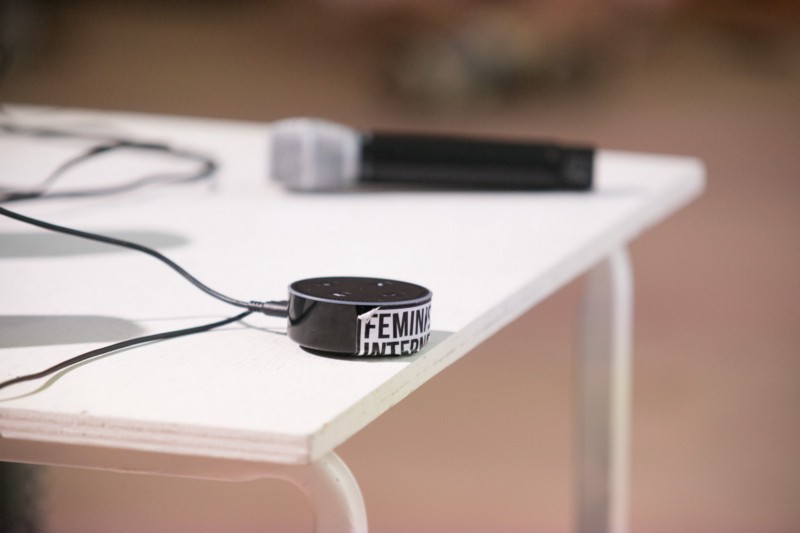Brief
WTF is a feminist conversation?
What kind of exchange between a human and a piece of technology would qualify as ‘feminist’?
How could the feminist nature of the exchange be measured by the designers of the technology?
Could there ever be a feminist response to ‘Hey Alexa, what’s the weather like today?’
Client
UAL & Feminist Internet
What we did
In the latter stages of 2018, we worked with UAL’s Creative Computing Institute and Feminist Internet in the design and delivery of a ‘Designing a Feminist Alexa’ programme.
We transformed 40 students and made them voice interface designers over the course of two intensive 3-day workshops, with a mission to imagine and prototype personal intelligent assistants that would meet a meaningful human need, and embody feminist values.
We really enjoyed the project, as it is at the core of our values — leveraging emerging technologies to build products and services for positive human interaction.
Here's a report on the project.

Here’s an quote from Alex, Head Creative Technologist at COMUZI on the project –
"When I got the brief, I was unsure of the best way to tackle it, but once I understood the Feminist Internet’s goal of building tangible prototypes, I began to ideate.
I thought, how could I get 40 students with no prior experience of voice technology, AI or even UX design to see themselves as Voice UI designers for three days?
My goal was to use a post-production phase to turn the prototypes into mini beta Alexa Skills. We explored many ideas including building HTML voice prototypes and recording voice, but by the good grace of the creator, we were able to find a voice prototyping tool, Storyline, although the team behind Storyline actually pivoted during the project — which caused major anxiety.
In the end, post-production was a breeze. I rewrote some scripts so they could be better presented, wrote some code to bring these concepts into mini Alexa Skills and was happy that some of the custom sounds the students had came up with worked really well."

Results
Pany
Pany was designed in line with Feminist PIA standards, considering the needs of our identified user and reflecting on questions of our team bias to ensure we did not support negative stereotypes.
Bud
The Conversation Design standard helped us think about how Bud sounds — The pitch of bud’s voice can be adjusted with a slider function. Instead of ‘choosing a gender’, the user can simply choose the sound of a voice they feel most comfortable with.
Page
Following the PIA conversation design standard, we carefully considered how Page would respond to abuse.
Essy
The PIA standards we followed asked us to reflect on whether the PIA should be gendered. We decided not to assign a gender to Essy, because being sympathetic to the fluidity and complexity of gender is fundamental to its purpose.
Pillow
“The values embedded and programmed into me, aim to empower and educate my user”
B(O)(O)
The PIA standards ask us to have a clear purpose in mind — one that meets a meaningful human need.
Boo is designed for teenagers of all identities experiencing puberty where a lot of change is happening physically and emotionally.
Boo is here to answer taboo questions and comfort the user by ensuring them that.
HiFuture
HiFuture is designed for students that are uncertain, confused and overwhelmed with the amount of future options they receive from the university…
We don’t want students to feel pressured by being a part of a “rat race” to find a job after graduation.
Egami
Egami is an eccentric, informal and friendly PIA. It promotes self-expression and self-love to the user.
It is open to everything that is queer.
